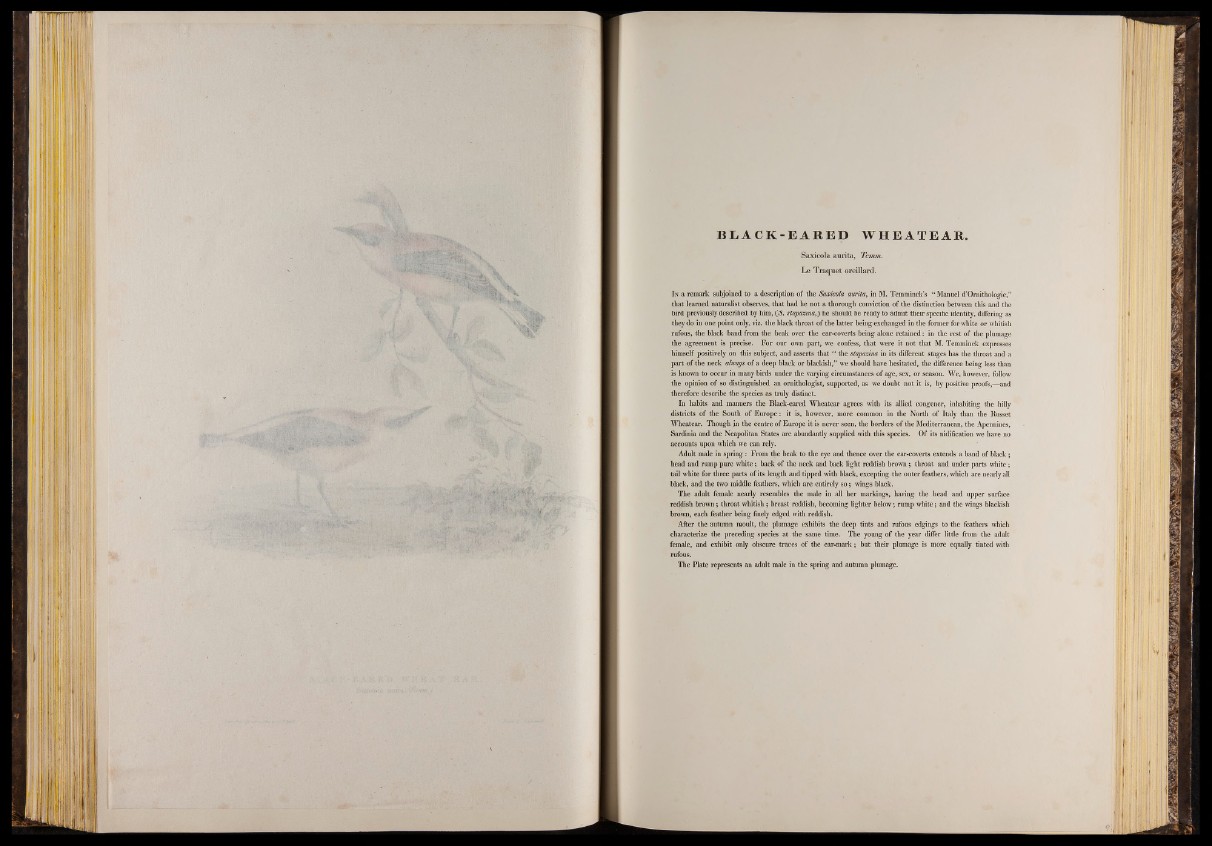
X v tife I
W S m
•’ ":2t&r a I
*P i I H p W W P 8
B L A C K - E A R E D WH E A T E A R .
Saxícola aurita, Temm.
Le Traquet oreillard.
In a remark subjoined to a description of the Saxícola aurita, in M. Temminck’s “ Manuel d’Ornithologie,”
that learned naturalist observes, that had he not a thorough conviction of the distinction between this and the
bird previously described by him, (S . stapazina,') he should be ready to admit their specific identity, differing as
they do in one point only, viz. the black throat of the latter being exchanged in the former for white or whitish
rufous, the black band from the beak over the ear-coverts being alone retained: in the rest of the plumage
the agreement is precise. For our own part, we confess, that were it not that M. Temminck expresses
himself positively on this subject, and asserts that “ the stapazina in its different stages has the throat and a
part of the neck always of a deep black or blackish,” we should have hesitated, the difference being less than
is known to occur in many birds under the varying circumstances of age, sex, or season. We, however, follow
the opinion of so distinguished an ornithologist, supported, as we doubt not it is, by positive proofs,—and
therefore describe the species as truly distinct.
In habits and manners the Black-eared Wheatear agrees with its allied congener, inhabiting the hilly
districts of the South of Europe: it is, however, more common in the North of Italy than the Russet
Wheatear. Though jn the centre of Europe it is never seen, the borders of the Mediterranean, the Apennines,
Sardinia and the Neapolitan States are abundantly supplied with this species. Of its nidification we have no
accounts upon which we can rely.
Adult male in spring : From the beak to the eye and thence over the ear-coverts extends a band of black;
head and rump pure white; back of the neck and back light reddish brown; throat and under parts white;
tail white for three parts of its length and tipped with black, excepting the outer feathers, which are nearly all
black, and the two middle feathers, which are entirely so; wings black.
The adult female nearly resembles the male in all her markings, having the head and upper surface
reddish brown; throat whitish; breast reddish, becoming lighter below; rump white; and the wings blackish
brown, each feather being finely edged with reddish.
After the autumn moult, the plumage exhibits the deep tints and rufous edgings to the feathers which
characterize the preceding species at the same time. The young of the year differ little from the adult
female, and exhibit only obscure traces of the ear-mark; but their plumage is more equally tinted with
rufous.
The Plate represents an adult male in the spring and autumn plumage.